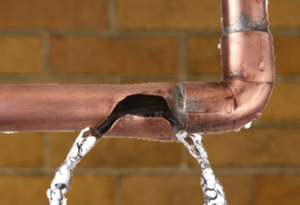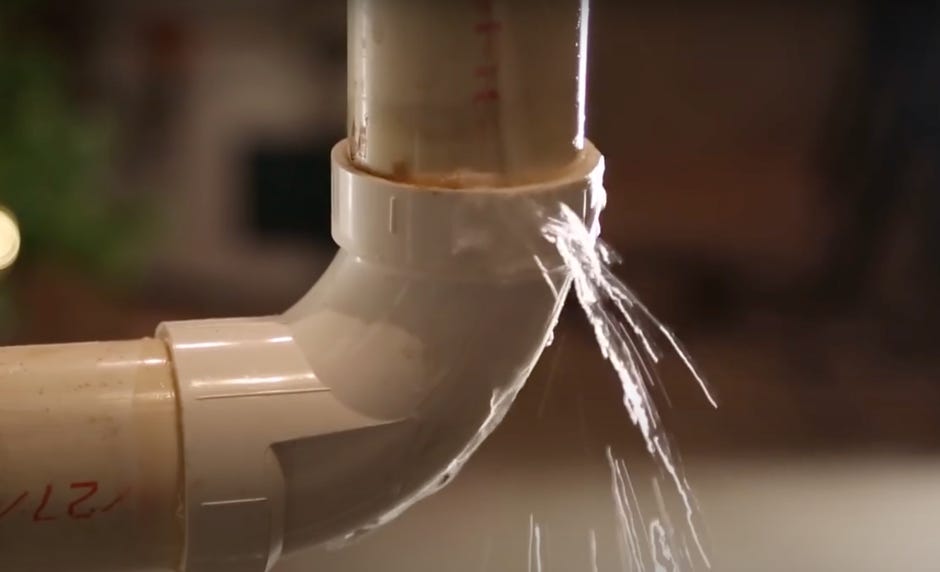Detecting and Quickly Fixing a Busted Pipe: Key Guidance
Detecting and Quickly Fixing a Busted Pipe: Key Guidance
Blog Article
The content listed below on the subject of How to Install and Connect a New Dishwasher is relatively captivating. Try it and draw your own conclusions.

A burst pipeline is a major emergency; you can just stand as you watch water you pay dearly to reunite with the planet. In worse situations, you observe a pool on your kitchen area flooring, which is a wonderful trip threat, especially if you have youngsters around. If the pipe that ruptured remained in your walls, bad news: you might require to paint that entire section.
Just how can a calamity like a ruptured pipeline be protected against and also managed? Well, by paying attention to your professional emergency plumbing professionals and following these guidelines.
How do I understand when my pipelines have burst?
Varying water stress
Pipelines do not just burst in a day. You might have noticed that your kitchen area tap or shower does not run instantly when you turn the tap. It might stop for a couple of seconds and after that blast you with even more pressure than common.
In other circumstances, the water might seem typical at first, after that drop in pressure after a few secs.
Damp walls and also water stains
Prior to a pipeline bursts, it will certainly leakage, many times. If this relentless leaking goes unnoticed, the leakage may graduate right into a vast tear in your pipe. One very easy means to avoid this emergency is to watch out for wet wall surfaces advertisement water discolorations. These water discolorations will lead you right to the leakage.
Puddles under pipes and sinks
When a pipeline bursts, the discharge forms a pool. It might appear that the puddle is expanding in size, and regardless of the amount of times you wipe the pool, in a couple of mins, there's one more one waiting to be cleansed. Frequently, you may not be able to trace the puddle to any type of visible pipes. This is a sign to call an expert plumber.
Untraceable leaking sounds
Pipe bursts can happen in the most undesirable areas, like within concrete, inside wall surfaces, or under sinks. When your house goes quiet, you may be able to hear an irritatingly relentless leaking noise. Even after you've inspected your shower head and also cooking area tap, the leaking may proceed.
Precious viewers, the trickling might be coming from a pipeline inside your wall surfaces. There isn't much you can do concerning that, other than inform a specialist plumber.
Shut down the Water
When water ices up, it increases in volume by regarding 9 percent. And also it expands with significant pressure: The pressure inside pipelines might go from 40 pounds per square inch to 40,000 psi! No pipe can hold that much stress, so it bursts. The break may occur where the ice kinds, yet more frequently, it takes place where water pressure finds a weak point in the pipe. That may be inches or perhaps feet from the frozen area. Locate the water shutoff valve and also turn off the water to prevent even more damages. You may additionally require to turn off the electricity also, relying on where the leakages happens as well as how big it is.
Polluted water
Many individuals presume a burst pipe is a one-way electrical outlet. Quite the contrary. As water flows out of the hole or wound in your plumbing system, impurities locate their way in.
Your water may be contaminated from the source, so if you can, inspect if your water tank has any problems. Nonetheless, if your drinking water is supplied and also purified by the local government, you must call your plumber instantly if you see or scent anything funny in your water.
What do I do when I find a ruptured pipeline?
Your water meter will remain to run even while your water wastes. To decrease your losses, discover the major controls and turn the supply off. The water pipe are an above-ground structure at the edge of your building.
How to Fix & Detect a Leaking Pipe
How Do I Know if a Pipe is Leaking?
Leak detection tests can help you determine if your pipe has a leak. Even if you don’t see an apparent leak, you should still conduct leak detection tests regularly to save water and money—and prevent major damage to your home.
Water meter. It can be helpful to figure out what your usual water meter usage numbers are and then monitor them regularly. To monitor your meter, first, turn off all water faucets in your home. Check the meter and write down the numbers. In a few hours, check the meter again. If the numbers have changed, you have a leak. Water gauge. Use a water gauge to test your water pressure. Your showerhead should produce a certain amount of water pressure based on its model and design. If the pressure is lower than it is supposed to be for that specific showerhead, your home likely has a leak. Puddles. Look inside your bathroom, laundry, and kitchen sink cabinets. Puddles around the cabinets or around toilets, tubs, showers, and washing machines indicate the presence of a leaking pipe. You may also notice loose tiles, peeling or flaking paint, or mold caused by water accumulation. Napkin test. Even if you don’t see any puddles, you may still have a leak. You can test for water leaks in the bathroom, laundry, and kitchen by wiping below-sink connections with a napkin, paper towel, or piece of toilet paper. If it becomes damp, you probably have a leaking pipe under the sink. Discolored walls. Walls that are discolored—usually with brown or yellow stains—or bulging might mean that they have been impacted by water damage caused by a leaking pipe. Smell. A leaky pipe will create sitting water, and over time, that water may develop a musty smell. If your home smells musty, but you can’t locate the source, it may be due to a leak. Steps for Fixing a Leaking Pipe
A leaky drain can be remedied by tightening the pipe base, replacing the drain seal, caulking the rim, and tightening the pipe nut. Similarly, a leaking toilet pipe can be treated by tightening the packing nut. You may also need to replace the valve. A leaky faucet may just need tightening or replacement of the washers. If that doesn’t work, consider replacing your faucet. If your pipe has a hole in it, you may want to use a pipe leak sealer or pipe leak tape. This quick fix for water pipe leaks can also temporarily fix a copper pipe leak. https://www.ahs.com/home-matters/quick-tips/how-to-tell-if-pipes-are-leaking/

Do you appreciate reading up on What to Know Before Installing a Dishwasher? Try leaving a review down below. We would be interested to know your opinions about this write-up. In hopes to see you back again in the near future. Be sure to take the opportunity to share this page if you appreciated it. Thanks for your time. Don't forget to come by our blog back soon.
Professional plumbers, immediate response. Report this page